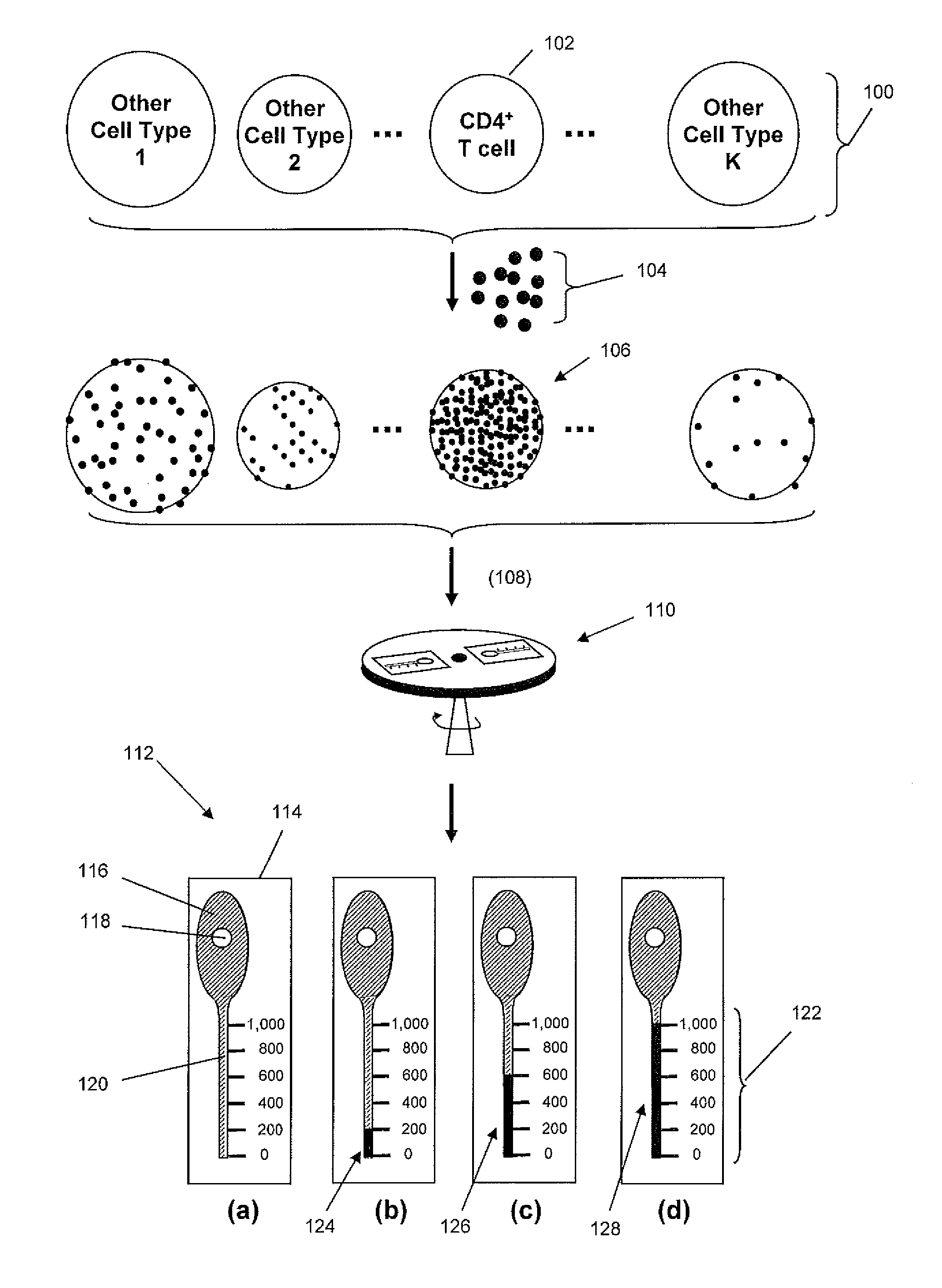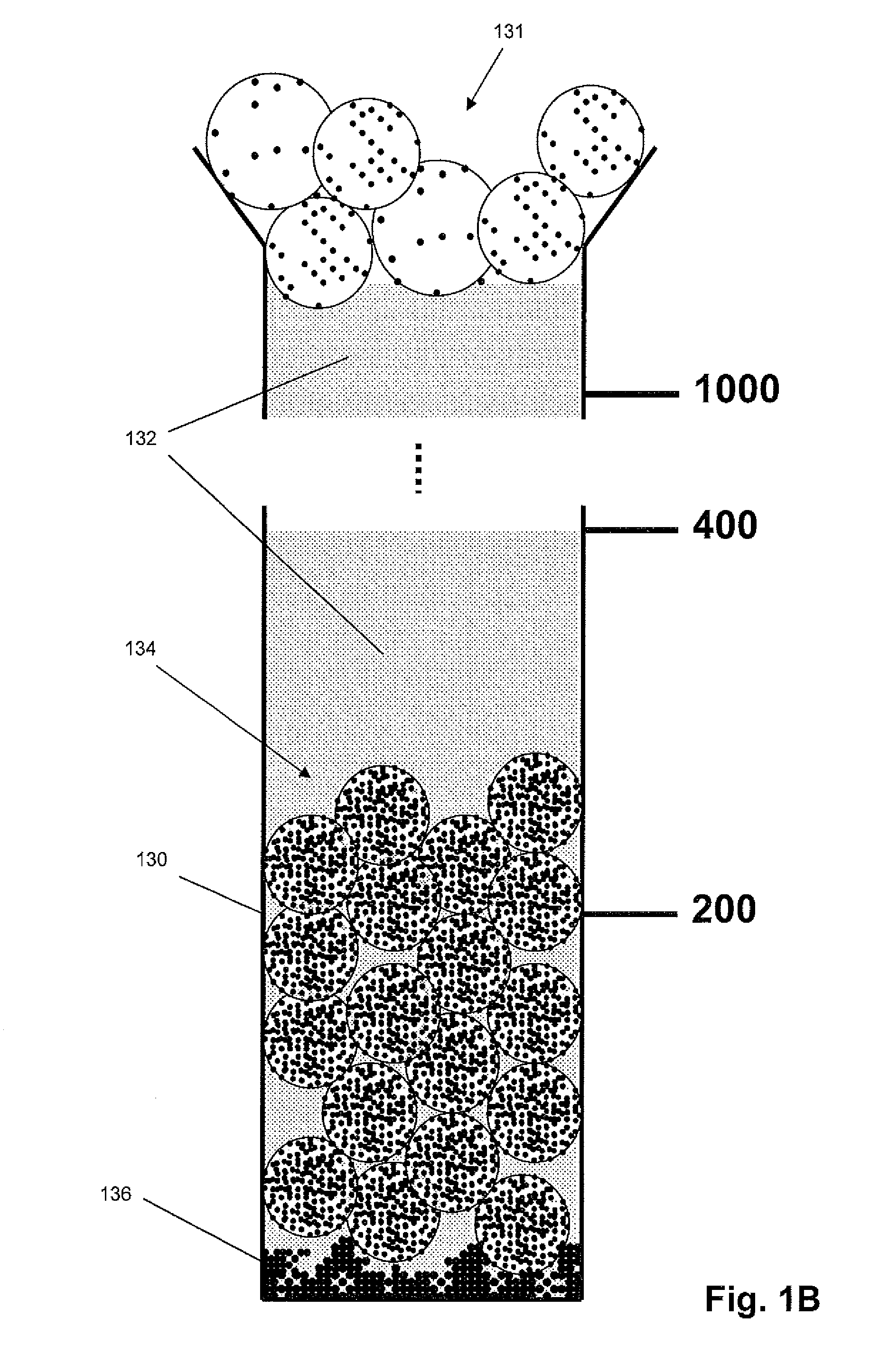Density-based cell detection system
a density-based cell and detection system technology, applied in biochemistry apparatus and processes, instruments, specific gravity measurement, etc., to achieve the effect of low cost and convenien
- Summary
- Abstract
- Description
- Claims
- Application Information
AI Technical Summary
Benefits of technology
Problems solved by technology
Method used
Image
Examples
Embodiment Construction
[0012]The practice of the present invention may employ, unless otherwise indicated, conventional techniques from molecular biology (including recombinant techniques), cell biology, immunoassay technology, microscopy, and analytical chemistry, which are within the skill of the art. Such conventional techniques include, but are not limited to, detection of fluorescent signals, image analysis, selection of illumination sources and optical signal detection components, selecting antibodies for specific cellular or molecular targets; labeling of biological cells, and the like. Such conventional techniques and descriptions can be found in standard laboratory manuals such as Genome Analysis: A Laboratory Manual Series (Vols. I-IV), Using Antibodies: A Laboratory Manual, Cells: A Laboratory Manual, PCR Primer: A Laboratory Manual, and Molecular Cloning: A Laboratory Manual (all from Cold Spring Harbor Laboratory Press); Wild, Editor, The Immunoassay Handbook, Third Edition (Elsevier Science,...
PUM
| Property | Measurement | Unit |
|---|---|---|
| size | aaaaa | aaaaa |
| sizes | aaaaa | aaaaa |
| sizes | aaaaa | aaaaa |
Abstract
Description
Claims
Application Information
 Login to View More
Login to View More - R&D
- Intellectual Property
- Life Sciences
- Materials
- Tech Scout
- Unparalleled Data Quality
- Higher Quality Content
- 60% Fewer Hallucinations
Browse by: Latest US Patents, China's latest patents, Technical Efficacy Thesaurus, Application Domain, Technology Topic, Popular Technical Reports.
© 2025 PatSnap. All rights reserved.Legal|Privacy policy|Modern Slavery Act Transparency Statement|Sitemap|About US| Contact US: help@patsnap.com



